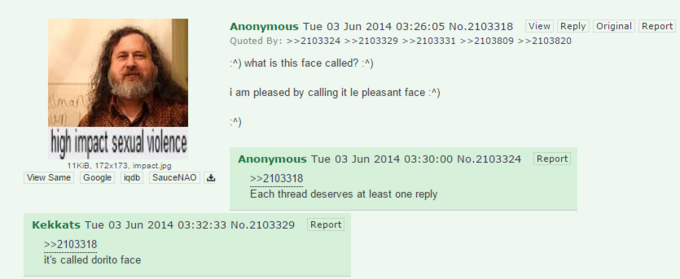Overview
Elevatorgate was an online controversy that swept across the atheist and skeptic communities in the wake of American feminist and atheist blogger Rebecca Watson’s public shaming of a man who asked her to join him for coffee in his hotel room while they shared an elevator ride together at the World Atheist Convention in June 2011.
Background
On June 20th, 2011, feminist and atheist blogger Rebecca Watson of Skepchick uploaded a video to YouTube in which she complained about a man asking her for coffee in the elevator at an atheist conference in Dublin, Ireland.
Um, just a word to wise here, guys, uh, don’t do that. You know, I don’t really know how else to explain how this makes me incredibly uncomfortable, but I’ll just sort of lay it out that I was a single woman, you know, in a foreign country, at 4:00 am, in a hotel elevator, with you, just you, and -- don’t invite me back to your hotel room right after I finish talking about how it creeps me out and makes me uncomfortable when men sexualize me in that manner.
In the comments section of the video, many viewers debated whether the attendee had done anything inappropriate or if Watson had overreacted.
Notable Developments
Richard Dawkins’ “Dear Muslima” Comment
On July 2nd, biology professor PZ Myers wrote a blog post in support of Watson, to which author Richard Dawkins replied in the comments section with a satirical letter directed toward a Muslim woman:
Dear Muslima
Stop whining, will you. Yes, yes, I know you had your genitals mutilated with a razor blade, and … yawn … don’t tell me yet again, I know you aren’t allowed to drive a car, and you can’t leave the house without a male relative, and your husband is allowed to beat you, and you’ll be stoned to death if you commit adultery. But stop whining, will you. Think of the suffering your poor American sisters have to put up with.
Only this week I heard of one, she calls herself Skep”chick”, and do you know what happened to her? A man in a hotel elevator invited her back to his room for coffee. I am not exaggerating. He really did. He invited her back to his room for coffee. Of course she said no, and of course he didn’t lay a finger on her, but even so …
And you, Muslima, think you have misogyny to complain about! For goodness sake grow up, or at least grow a thicker skin.
The comment was subsequently reported on by several news sites, including New Statesman, Gawker, The Atlantic and Salon. On July 5th, Watson published an article titled “The Privilege Delusion,” which called for members of the skeptic community to boycott Dawkins’ work.
Criticism
On July 6th, Skeptoid published an article by blogger Alison Smith, which criticized Watson’s video about the conference incident. On July 12th, 2011, YouTuber The Amazing Atheist uploaded a video arguing that Watson had overreacted (shown below), which garnered upwards of 300,000 views and 12,400 comments in the first two years.
Harassment Claims
On September 29th, 2011, Watson published a blog post titled “Mom, Don’t Read This,” in which she claimed to be the victim of a harassment campaign since the start of the elevatorgate controversy.
Thunderf00t’s Removal from Freethoughtblogs
On June 25th, 2012, the atheist blog network Freethoughtblogs published an article by blogger and YouTuber Thunderf00t titled “Misogynist!”, which argued that Watson had exaggerated the issue of sexual harassment at atheist conferences. The same day, Freethoughtblogs published an article by blogger P.Z. Myers, who criticized Thunderf00t’s arguments for being “an embarrassingly clueless defense of his privilege.” On June 29th, Thunderf00t uploaded a narrated version of his “Misogynist!” article to YouTube (shown below).
On July 1st, 2012, Freethoughtblogs published an article revealing that two of the site’s bloggers Thunderf00t and Greg Laden had been removed from the site for “their behavior towards other members of the community.” On July 5th, Thunderf00t uploaded a video responding to his removal, which accused Freethoughtblogs writer P.Z. Myers of “shameless dishonesty” (shown below, left). On July 10th, Myers uploaded a video responding to criticisms he had received for banning Thunderf00t from the site (shown below, right).
Atheism+
On August 19th, 2012, Freethoughtblogs published an article by blogger Jen McCreight titled “Atheism+,” which promoted a new community of atheists centered around social justice and feminism.
We are…
Atheists plus we care about social justice,
Atheists plus we support women’s rights,
Atheists plus we protest racism,
Atheists plus we fight homophobia and transphobia,
Atheists plus we use critical thinking and skepticism.
The atheism+ movement sparked many online debates within atheist and skeptic community, with many comparing the schism to that formed by the elevatorgate controversy.
Dawkins’ Apology
On August 6th, 2014, Dawkins apologized for the “Dear Muslima” comment in a blog post:
“There should be no rivalry in victimhood, and I’m sorry I once said something similar to American women complaining of harassment, inviting them to contemplate the suffering of Muslim women by comparison.”
That day, Watson tweeted that Dawkins “did the blog-equivalent of coughing into his hand while mumbling ‘sorry’ to me” (shown below).
![]()
Search Interest
External References





























